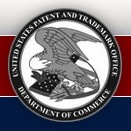Apple has been granted several patents by the US Patent & Trademark Office. Among them are design patents for the iPhone 4 (patent D627,778), the iPad (D627,777) and the iPhone/iPod touch graphical user interface (D627,790). Other patents granted are summarized below.
Patent number 7,840,543 is for a method for sharing groups of objects. The patent is for a method of sharing a group of one or more objects between a plurality of users, in which one or more of said plurality of users is able to change parameter data of at least one said object. The method comprises storing at least one version of each said object; when an object is changed, creating a new version of the object, the new version of the object comprising additional data relating to the creation of the new version; storing the new version of the object together with any version of that object before the change; providing all versions of the object to each of said plurality of users; and using the additional data provided for each version of the object to determine how to display the object. The group may be a calendar and each object may be an event in the calendar. In that case, the object parameter data may comprise a start time of the event, an end time of the event, a description of the event, a status of the event, whether the event is to be repeated and the persons attending the event. The additional data may comprise an identification of the user who made the change, a time at which the change was made, a description of the change, a user comment relating to the change and an identification of the previous version of the event from which the present version was created. The inventors of the patent are Bertrand Guiheneuf, Maury Sebastien, Olivier Gutknecht, Julien Jalon and Scott Ryder.
Patent number 7,839,411 involves virtualization of graphics resources. Graphics resources are virtualized through an interface between graphics hardware and graphics clients. The interface allocates the graphics resources across multiple graphics clients, processes commands for access to the graphics resources from the graphics clients, and resolves conflicts for the graphics resources among the clients. The inventors of the patent are John Stauffer, Bob Beretta and Ken Dyke.
Patent number 7,839,411 is for software or other information integrity verification using variable block length and selection. An integrity verification process and associated apparatus to detect tampering or other alterations to computer code (software) or other computer files, and especially useful to detect tampering with code by hackers who might try to plant their own malicious code in the software. To make the verification process more robust versus hackers, each e.g., object code file to be protected is first selected using some sort of rule, then partitioned into variable length blocks or portions, the lengths varying in an unpredictable manner. Each portion has its checksum or hash value computed. An accompanying verification file is created which includes a vector for each portion including the portion’s start address in memory, length, and the computed checksum or hash value. When the code is later to be run (executed) the verification file is conventionally read and each portion is verified by computing its checksum or hash value using the same algorithm as before, and comparing that to the value in the associated verification file vector. Lack of a match in the two values indicates tampering, so execution of the code can be halted. The inventors of the patent are Julien Lerouge, Pierre Betouin, Gianpaolo and Augustin J. Farrugia.


